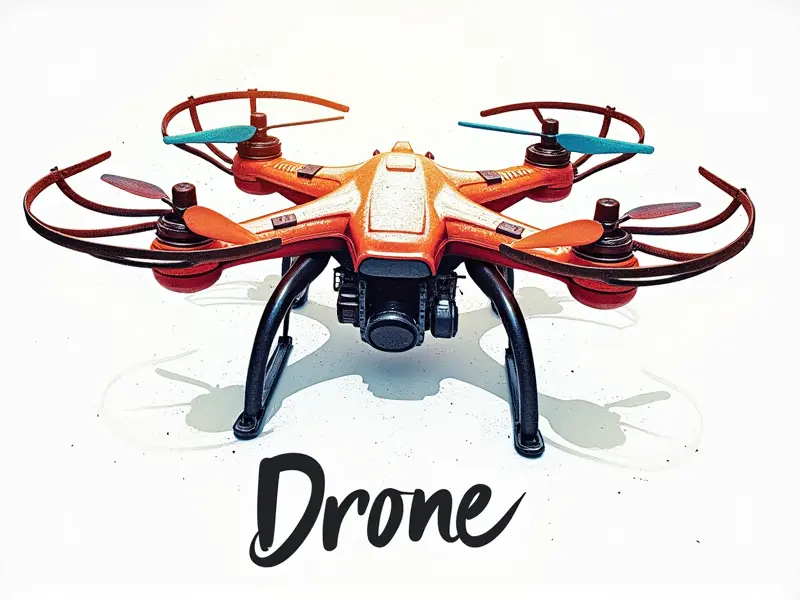What is C-rate in batteries?

Understanding Battery C-Rate Explained
The term "C-rate" is a fundamental concept in the world of batteries, particularly for enthusiasts and professionals working with drones, RC vehicles, and other electronic devices. It refers to the rate at which a battery discharges its capacity relative to its nominal capacity. Understanding C-rate is crucial because it directly impacts performance, longevity, and safety.
How C-Rate Affects Your Drone's Performance
The C-rate of your drone’s battery plays a pivotal role in determining how well the drone performs during flight. A higher C-rate allows for faster discharge rates, which translates to more power being available at any given moment. This is particularly important for high-performance applications like racing or acrobatic maneuvers where quick bursts of speed and agility are required.
However, it's not just about raw power; the C-rate also affects flight duration. A lower C-rate typically means a longer discharge time, which can extend your drone’s operational life on a single charge. Balancing these factors is key to optimizing performance without compromising safety or longevity.
Maximizing Flight Time with Proper C-Rate
To maximize the flight duration of your drone, selecting an appropriate C-rate for your battery is essential. A lower C-rate generally means a slower discharge rate and longer operational time. For instance, if you're using a 10Ah battery at a 2C rate, it will provide power for approximately 5 hours (assuming no other losses).
However, choosing the right balance between performance and longevity is crucial. A higher C-rate might offer better peak performance but could reduce overall flight time due to increased energy consumption.
Choosing the Right C-Rate for RC Vehicles
Selecting the correct C-rate for your RC vehicle depends on several factors, including the type of vehicle (e.g., car, boat, plane), its intended use (racing, cruising, etc.), and the desired performance characteristics. For high-speed racing applications, a higher C-rate is often preferred to ensure rapid acceleration and sustained power delivery.
Conversely, for RC vehicles designed for endurance or long-distance travel, a lower C-rate might be more suitable as it allows for extended operational time without compromising safety.
C-Rate: The Key to Optimal Battery Usage
The C-rate is crucial in determining how efficiently your battery operates. A higher C-rate can provide the necessary power output for demanding tasks but may lead to faster degradation of the battery over time due to increased stress on its internal components.
On the other hand, a lower C-rate ensures that the battery discharges more slowly and evenly, which helps in extending its lifespan by reducing wear and tear. Therefore, understanding your application's requirements is vital when choosing an appropriate C-rate for optimal performance and longevity.
Simplifying C-Rate for Beginners in RC Flying
For beginners entering the world of remote control flying, grasping the concept of C-rate can seem daunting at first. However, it’s a straightforward measure that essentially tells you how quickly your battery can discharge its capacity relative to its nominal rating.
A simple way to think about it is this: if your battery has a 10Ah capacity and operates at a 2C rate, it means the battery discharges at twice its rated capacity per hour (i.e., 20A).
Decoding the Mystery of Battery C-Rate
The mystery surrounding C-rate can be easily demystified by understanding that it is simply a measure of how fast your battery can discharge relative to its nominal capacity. This rate directly influences performance, longevity, and safety.
To decode this further, consider an example: if you have a 5000mAh (or 5Ah) LiPo battery operating at a 3C rate, it means the battery discharges at three times its rated capacity per hour (i.e., 15A).
Choosing the Right C-Rate for FPV Racing
In the competitive world of first-person view (FPV) racing, selecting the right C-rate is critical. High-performance batteries with higher C-rates are preferred to ensure rapid acceleration and sustained power delivery during intense races.
However, it’s important to balance this need for high performance against potential risks such as overheating or reduced battery lifespan due to increased stress on internal components.
Maximizing Flight Time with Optimal C-Rate
To achieve the longest possible flight time, selecting an optimal C-rate is essential. A lower C-rate typically means a slower discharge rate and longer operational time. For instance, using a 10Ah battery at a 2C rate provides power for approximately 5 hours.
However, balancing performance with longevity is key. While higher C-rates offer better peak performance, they can reduce overall flight duration due to increased energy consumption.
C-Rate: Key to Longer Flights and Better Power
The C-rate of your battery is crucial in determining both the length of your flights and the power available during those flights. A higher C-rate offers more instantaneous power but may shorten overall flight duration due to faster discharge rates.
Conversely, a lower C-rate ensures longer operational time by discharging at a slower rate, which can be ideal for applications requiring extended use without compromising safety or performance.
Simplifying C-Rate for RC Enthusiasts
For seasoned enthusiasts in the realm of remote control flying, simplifying the concept of C-rate is about understanding its direct impact on your device's performance and longevity. A higher C-rate means more power but potentially shorter flight times.
A lower C-rate offers extended operational time at the cost of reduced peak performance. Balancing these factors based on your specific needs ensures optimal usage of your battery.
Conclusion
In conclusion, understanding and properly utilizing the concept of C-rate is essential for anyone working with batteries in drones, RC vehicles, or other electronic devices. By selecting an appropriate C-rate, you can optimize performance, extend flight time, and ensure safety while maximizing the lifespan of your battery.

